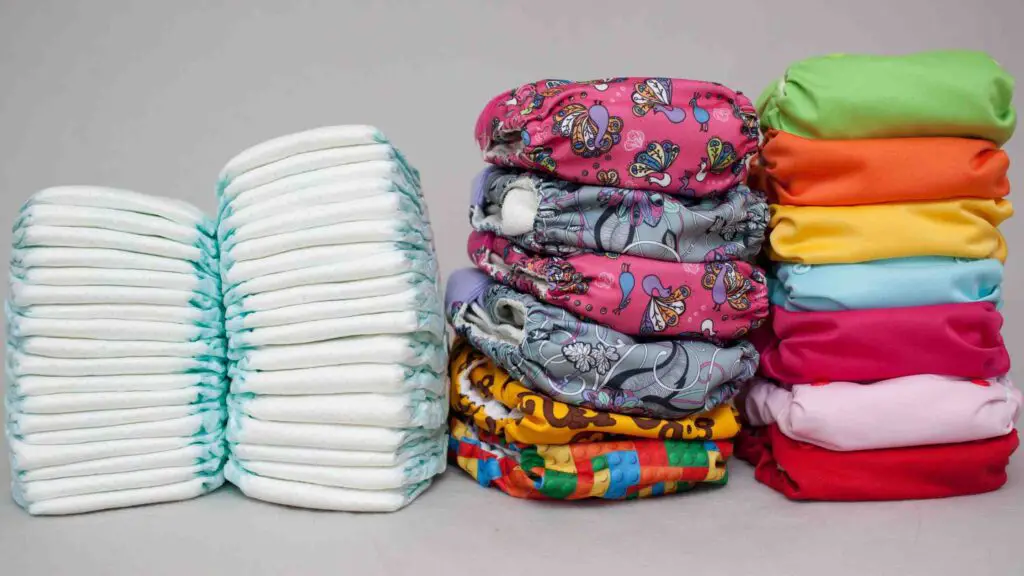Why is there a Diapers shortage in 2023? Online searches for “diapers” have increased recently. It results from news reports claiming a “shortage” of household items for parents of young children in the United States. The New York Times wrote in 2021 that “diapers are the newest pandemic shortage.” That particular article mainly discussed how expensive diapers have become for parents.
Studies show that one in every three American families faces a diaper shortage. Thus, according to the National Diaper Bank Network, American families have trouble getting diapers for their newborns and toddlers. The nation’s diaper shortage is probably due to the COVID-19 pandemic’s effects on the world’s supply chain. Let us briefly discuss this issue in this article.
DiscontinuedNews is impartial and independent, and every day, we create distinctive, world-class programs, news, and content that inform, educate and entertain millions of people worldwide.
What happened to Diapers Manufacturing?

There was a labor shortage for companies during the pandemic. Also, it was hard to import goods from nations that are under a COVID-19 pandemic emergency lockdown. Also, a backlog of cargo ships in California ports prevents the delivery of goods to retailers.
Tens of thousands of containers were reportedly stopped at the ports. This includes ports such as Los Angeles and Long Beach, California, the two West Coast entry points that carry more than a quarter of all American imports. The Wall Street Journal reports on this. The port had more than 60 ships queued up, with long waits.
Also, the cost of diapers has increased. According to estimates, infants need up to 12 diapers daily, which can run between $70 and $80 per child every month. Kimberly-Clark disclosed price increases for some of its goods in the spring. This includes Huggies diapers and Scott’s toilet paper.
Moreover, Procter & Gamble disclosed in April 2021 that its prices in three categories would rise in September 2021. It includes baby care, feminine care, and adult incontinence. These are all due to the increasing cost of the raw materials used to make the products.
Diaper bank WestSide Baby in Seattle claims on its website that many carers it helps are already struggling to get essentials. They can now not support their families due to the lack of this essential item.
In response to the scarcity, the NDBN urged people to contribute diapers to diaper banks nationwide. It is essential to know that they are also struggling to keep up. A network is being established to assist infants, and their families in all 50 states as well as Washington, D.C. This network consists of more than 200 regionally based diaper banks, pantries, and food banks. In such a way, the pandemic created shortages of diapers.
Diaper Shortages 2023

A father in Florida was caught in September 2021. This incident happened after he left a Walmart with a cart full of diapers and baby wipes after his credit card was repeatedly denied.
The coronavirus pandemic’s financial troubles and nationwide diaper shortages disrupt supply chains. Also, bulk purchases have made it more challenging for families to keep a regular supply of diapers for their kids. Thus, that particular father alone cannot be blamed.
Also, during the epidemic, demands diaper donations have grown by 500%. At the same time, diaper prices have climbed by 10%. This data is according to Baby2Baby, a nonprofit firm that offers diapers, clothing, and other newborn supplies to low-income families.
One in three families had already struggled to pay for diapers before the outbreak. Kelly Sawyer Patricof, co-CEO of Baby2Baby, informed the media of this. The diaper packages that were $25 in 2020 now cost about $40 in 2021. Also, when we look at the quantity, it contains fewer diapers. As a result, parents are paying more money for fewer items.
National Diaper Network is a part of the ongoing public health problem called “diaper need.” The National Diaper Bank Network states that public services like food stamps and the Special Supplemental Nutrition Program for Women, Infants, and Children (WIC) do not provide the funds for diapers. But they define diaper need as “the scarcity of the diapers to keep an infant or child clean, dry, and healthy.”
Moms Helping Moms founder and co-executive director Bridget Cutler said: When carers don’t have diapers to keep a baby clean, dry, and healthy, they are compelled to face a situation. It is nothing, but they may keep their newborns in soiled diapers longer than they should. As a result, skin infections, open sores, urinary tract infections, and other disorders that could need medical help are possible in newborns and toddlers.
The supply chain challenges and growing costs of necessities adversely affect low-wage families. It also impacts people living in poverty and can lead to greater diaper demand. This was said by Joanne Samuel Goldblum, CEO and creator of the National Diaper Bank Network.
Are diapers going up in price in 2023?
By 2023, it is predicted that the global diaper industry will be worth $84,317.6 million. The fundamental causes of the market’s rise are as follows:
- expanding demand for soft, highly absorbent diapers for babies and adults
- rising employment of women
- the growing adult population
- the increasing use of biodegradable diapers and
- increased public awareness of personal hygiene
For the diaper market, the pandemic has been a double-edged sword. Sonali Jagadev, a research analyst at Beauty & Fashion, narrates this. On the one hand, higher cost awareness has reduced consumers’ purchasing capacity. On the other side, growing health and environmental concerns have led to value-added product features. Thus, products with a clean origin, such as natural, plant-based, and organic, are more common.
Currently, some questions need answers. This includes how to maintain a balance between quality and price in a post-pandemic society. Despite the U.S. market’s maturity, it anticipates a slight increase in infant diaper sales over the following five years.
Conclusion
For parents of children under five, 2022 has been a challenging year. There is a lack of infant formula; younger children still cannot receive the COVID-19 vaccine, and the cost of several essentials. Also, the demand for diapers has been rising.
Groceries can be purchased with the assistance of food banks and the government. But diapers are more challenging to get. They are not usually available at food banks and federal and state programs like Women, Infants, and Children or the Supplemental Nutrition Assistance Program don’t support them.
Diaper banks aim to help struggling parents fill that void. They are generally unable to supply all the diapers a baby needs. But they can help families who cannot afford as many diapers as they need.
